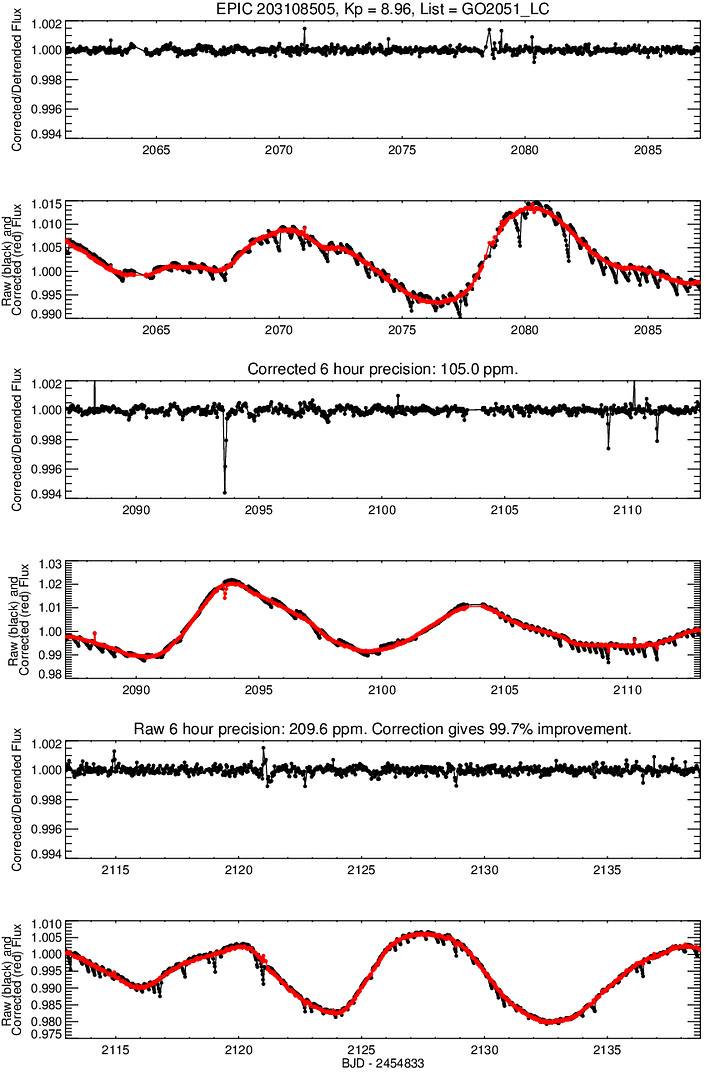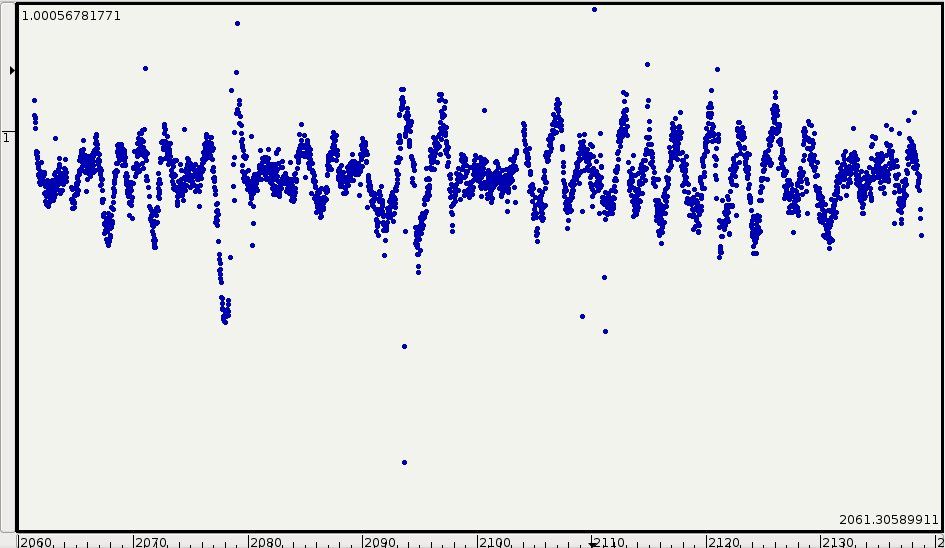EPIC 203108505.Possible transiting planet system
-
 by
ACS_LPSP
by
ACS_LPSP
http://talk.planethunters.org/#/subjects/APH0000ey7?quarter=1-2
Posible multiplanet system.The light curve is well defined and can be seen quite easily transit on days 8,24,26.Parameters parent star unknown. It would be nice to know the nature of this transit and spectral type (if it is possible of course) the star for further study of this object.
Posted
-
 by
ajamyajax
in response to ACS LPSP's comment.
by
ajamyajax
in response to ACS LPSP's comment.
EPIC 203108505: maybe several blended periodic transits, but these smooth LC's seem to have these features so difficult to guess if they are a planet or a BGEB or glitches or just part of the flux. The star appears to be a very small M-Dwarf based on my limited view at this via some color matches. My guesses for these durations do seem to fit a star near that size or one a bit larger but that might just be a coincidence too. But still hope this helps and hope you keep looking when you have the spare time. Periodic events really do turn into real finds here from time to time.
s1=2060.55 p1=5.4495 d1=0.08 (1.92 hours)
s2=2076.03 p2=17.595 d2=0.12 (2.88 hours)
EPIC, 2MASS, J mag, H mag, K mag, J - H, H - K, (J-H spectral type, stellar mass est) (H-K spectral type, stellar mass est)
203108505 , 2MASS J16275221-2713482 , 8.960 , 7.982 , 7.593 , 0.978 , 0.389 , ('L2V', '...') , ('M8V', 0.082)
au min-max 0.05 0.055
stellar diameter in solar units min-max 0.465 0.62
stellar mass in solar units min-max 0.56 0.75
period in days min-max 5.433 5.458
duration in hours min-max 1.806 2.195au min-max 0.105 0.12
stellar diameter in solar units min-max 0.45 0.6
stellar mass in solar units min-max 0.5 0.745
period in days min-max 17.573 17.6
duration in hours min-max 2.672 3.132Posted
-
 by
zoo3hans
by
zoo3hans
Hm, looking at the corrected data I'm not sure if there is anything periodic.


Posted
-
 by
ACS_LPSP
by
ACS_LPSP
It is clear that on the basis of new graphs of the light curve space so the object here is likely in addition to the activity of the star's nothing.
[quote="zoo3hans"]Hm, looking at the corrected data I'm not sure if there is anything periodic. [/quote]
zoo3hans, but as you adjust these data? What program do you use for such operations?
Posted
-
 by
zoo3hans
by
zoo3hans
Dear ACS LPSP
I looked at the corrected data on
https://www.cfa.harvard.edu/~avanderb/k2.html
I think it's amazing what he and his colleagues had made there.
The graph at the bottom is done with "ggobi", a program I use on my Linux computer (Ubuntu 14.04 LTS).
Yours, Hans Martin
Posted
-
 by
ACS_LPSP
by
ACS_LPSP
Hm , Interestingly enough. Let's see . And you Hans Martin thanks for the detailed analysis of the light curve of the star, as well as for scientific information and scientific software. I think this discussion. until you can close, because of the above then the scientific evidence we can conclude that the frequency of the signal can not be traced.
Yours, Anton SobolevPosted
-
 by
ajamyajax
in response to zoo3hans's comment.
by
ajamyajax
in response to zoo3hans's comment.
Hmm as you said this just a speculative idea to support a new user, but unlikely either software you used here would show any small blended transits, so of course you didn't see anything. That said, I lean toward glitch-like transit-looking events here even though there are three sometimes blended but periodic repeats for one and 4 or 5 (maybe) for the other.
Posted